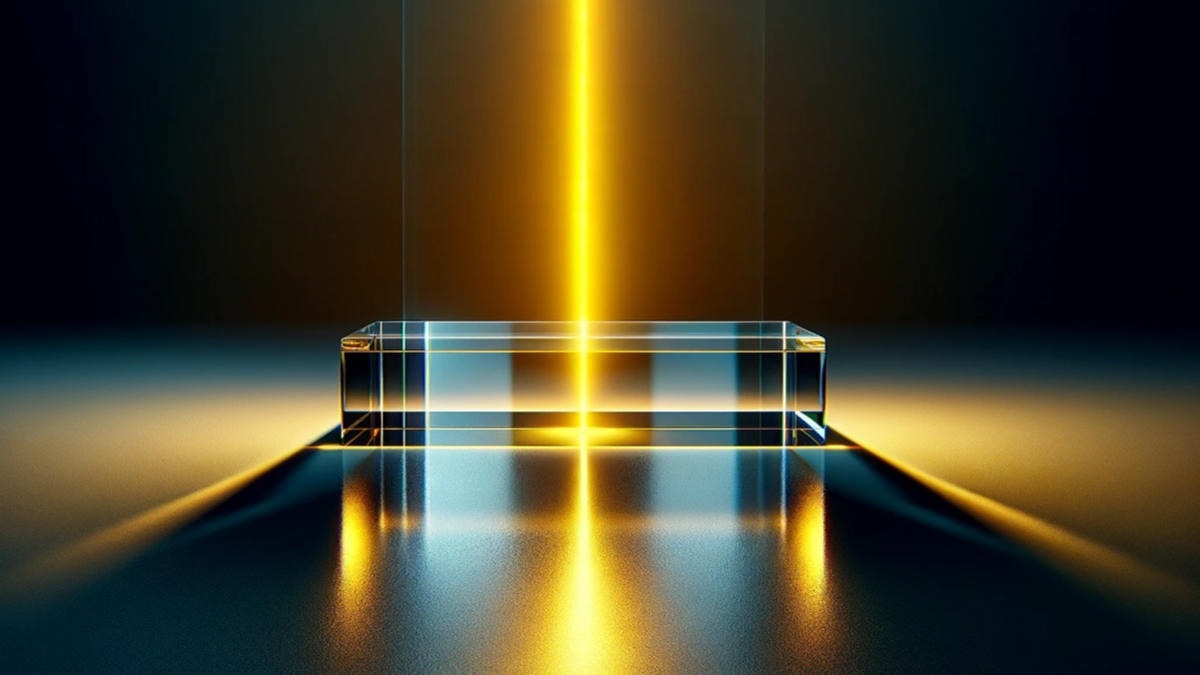Reviewed by Lexie CornerMar 1 2024
It was long believed that the disorganized atomic structure of amorphous materials prevented them from selectively absorbing light. However, a recent study from uOttawa refutes this hypothesis and demonstrates that amorphous materials can display dichroism—the ability to selectively absorb light with varying polarizations.

Image Credit: Professor Ravi Bhardwaj
Researchers at the University of Ottawa discovered that employing helical light beams in disordered solids shows a phenomenon called dichroism, which is the differential absorption of light. This revelation defies previous assumptions and opens up the possibility of altering how light interacts with certain materials by modifying the light’s qualities.
These findings also highlight the significance of short- to medium-range order within disordered solids in determining how materials react to light.
This year-long study, led by Professor Ravi Bhardwaj, a Department of Physics researcher who heads uOttawa’s Extreme Ultrafast Photonics research group, and doctoral students Ashish Jain and Jean-Luc Begin, was carried out at uOttawa’s Advanced Research Complex (ARC) with professors Thomas Brabe and Paul Corkum.
The research was conducted by employing helical light beams carrying orbital angular momentum to probe the optical properties of amorphous and crystalline materials. By utilizing a birefringent liquid crystal plate, called a q-plate, developed by Professor Karimi’s group, we were able to produce designer light fields with twisted wavefronts that describe a corkscrew pattern.
Ravi Bharadwaj, Full Professor, Department of Physics, University of Ottawa
This study has far-reaching ramifications and calls into question commonly held notions regarding the optical properties of amorphous materials. It also provides the opportunity to manipulate a material’s optical behavior utilizing helical light beams. These discoveries have implications for several domains, including materials science, optics, and chiroptical spectroscopy.’
Bharadwaj added, “Our team developed a new method to show that non-crystalline solids can exhibit helical dichroism, which means they react differently to light that twists in different directions. The experimental evidence was complemented by theoretical models developed in collaboration with Professor Brabec, providing a comprehensive understanding of the observed phenomena.”
Ashish Jain and Jean-Luc Bégin further stated, “The helical light served as an indirect probe of short-to-medium-range order in disordered solids that extends up to 2 nm. Our research will aid efforts to understand the mysterious nature of amorphous materials.”
This research substantially improves the understanding of the optical characteristics of solid-state materials. This finding opens the door for novel applications and more investigation into the unique powers of helical light beams in material property probing and manipulation by proving the existence of intrinsic dichroism in both crystalline and amorphous materials.
Journal Reference:
Jain, A., et al. (2024) Intrinsic dichroism in amorphous and crystalline solids with helical light. Nature Communications. doi:10.1038/s41467-024-45735-9.